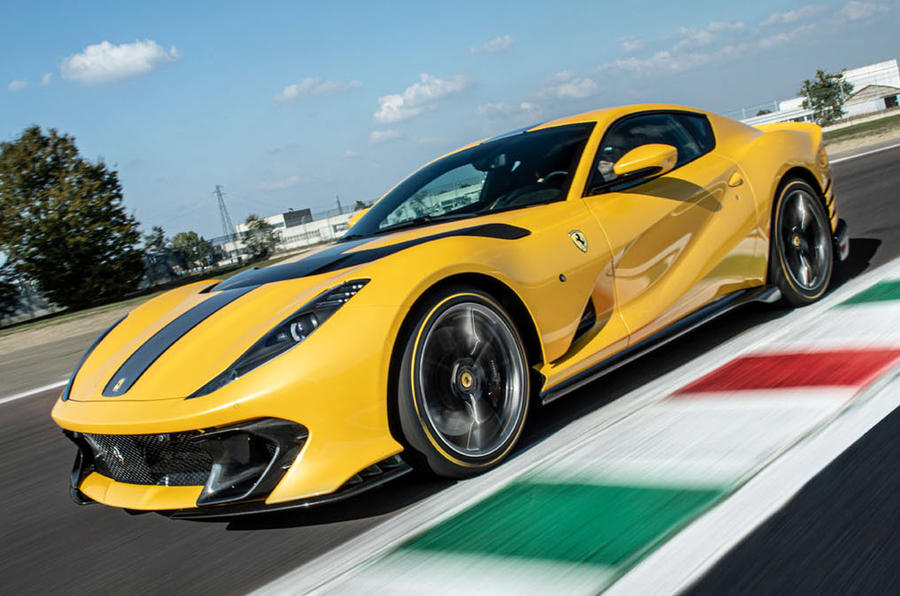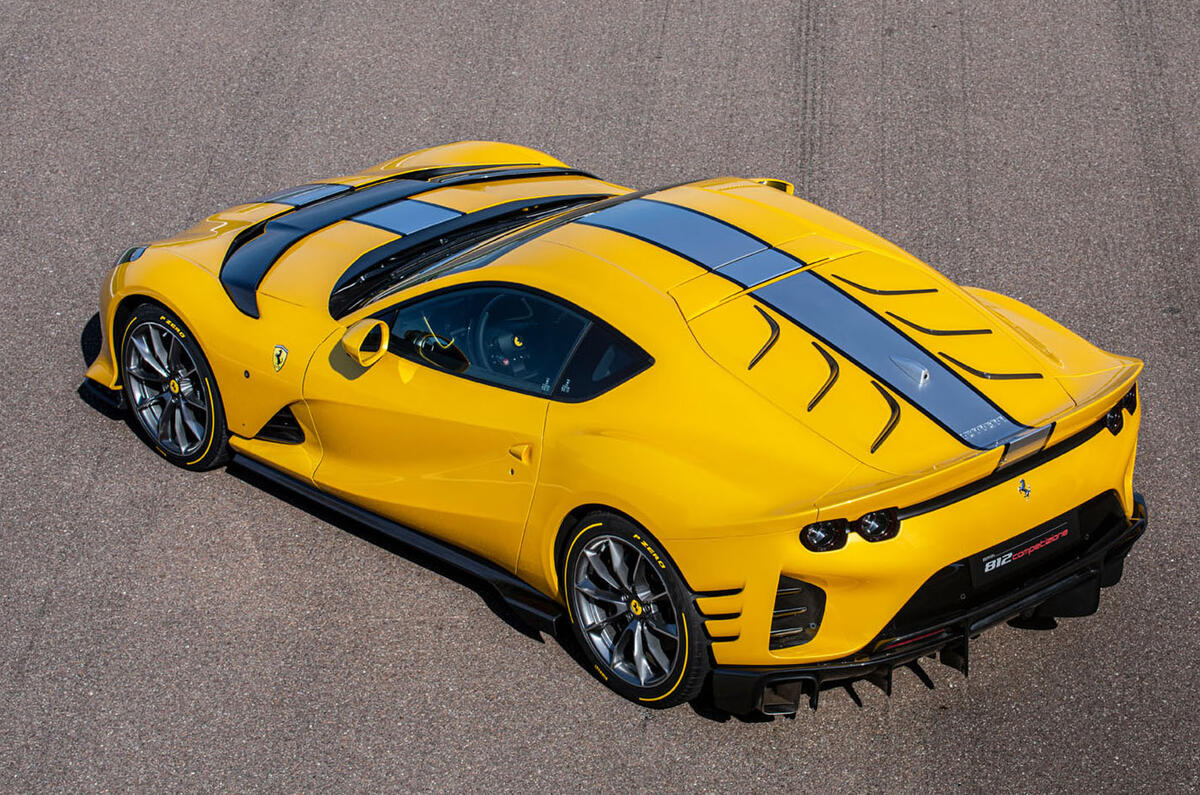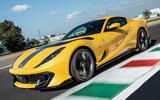What is it?
Enter, then, the latest special Ferrari that you have to be invited to buy. It’s the 812 Competizione and, as is the norm with different generations of Ferrari, it gets a different name rather than just being, say, another ‘GT3’ or ‘LT’. This car’s forebears are the F12 tdf and the 599 GTO.
It’s based on the ‘ordinary’ 812 Superfast, whose 789bhp 6.5-litre V12 has been tweaked even more as the Competizione’s centrepiece, with titanium conrods, new pistons, a 3%-lighter crankshaft and redesigned heads with sliding finger followers between the camshafts and the valve stem (because they cope best with very aggressive cams and high revs). Now the engine revs to 9500rpm and makes an additional 30bhp while doing so, for 819bhp.
At the 2015 launch of the F12 tdf, Ferrari’s engineers thought there was one more generation of development left in the big V12. This is that car but, legislation notwithstanding, there might even be a little more yet.
The F12 tdf’s throttle response was, though, massively aggressive, even at low revs. Too responsive. It’s what Ferrari thought its customers wanted at the time. Getting a big front-engined V12 car to be hyper- responsive isn’t easy, so they put huge tyres on the front and then set about taming it. Just not quite enough. This time around, they say, they looked for a car that’s a little more drivable – although still one with huge, 275-section front tyres.
Both stability and agility are meant to be aided by the third generation of Ferrari’s rear-steering system, which it calls Virtual Short Wheelbase.
Usually, rear-steer systems turn the wheels in unison, either in the same direction as the fronts to aid stability at high speed or against them to increase low-speed agility. In this iteration, though, the rear wheels can steer independently of each other. So they toe in under braking to add stability, then they go back to pointing the same way as each other at other times.
Then, finally, there are the aerodynamic upgrades, which couple with cooling upgrades and some new design touches. The lateral slash across the bonnet is meant to shorten the look of the vast front section, but it lets air out of the engine bay at its edges, too.
A larger front grille lets more air at the radiators and the carbon-ceramic brakes. Thus the underbody is flat, without the regular 812’s fins that push air to the wheel wells, so more air now travels at speed beneath the body to the vast rear diffuser.
The titanium exhausts sit at the very edge of the body, possible because new petrol particulate filters negate the need for a muffler at the rear. And while carbonfibre vanes are absent from the underbody, they do feature on the rear deck, nudging fast-moving air outwards towards a full-width rear spoiler.
The opaque rear deck also has the visual effect of lengthening the body, making this very front-engined V12 look more racy, more mid-engined.
![]()












































Join the debate
Add your comment
He"s written many an interesting VW piece too.
Does Matt choose his own stories or does his editor?
This car we'll be long forgotten by tomorrow and like you say, never seen.
I suppose Nero was Italian. Now where did I put the fiddle?
Know your readership!
Thank you.